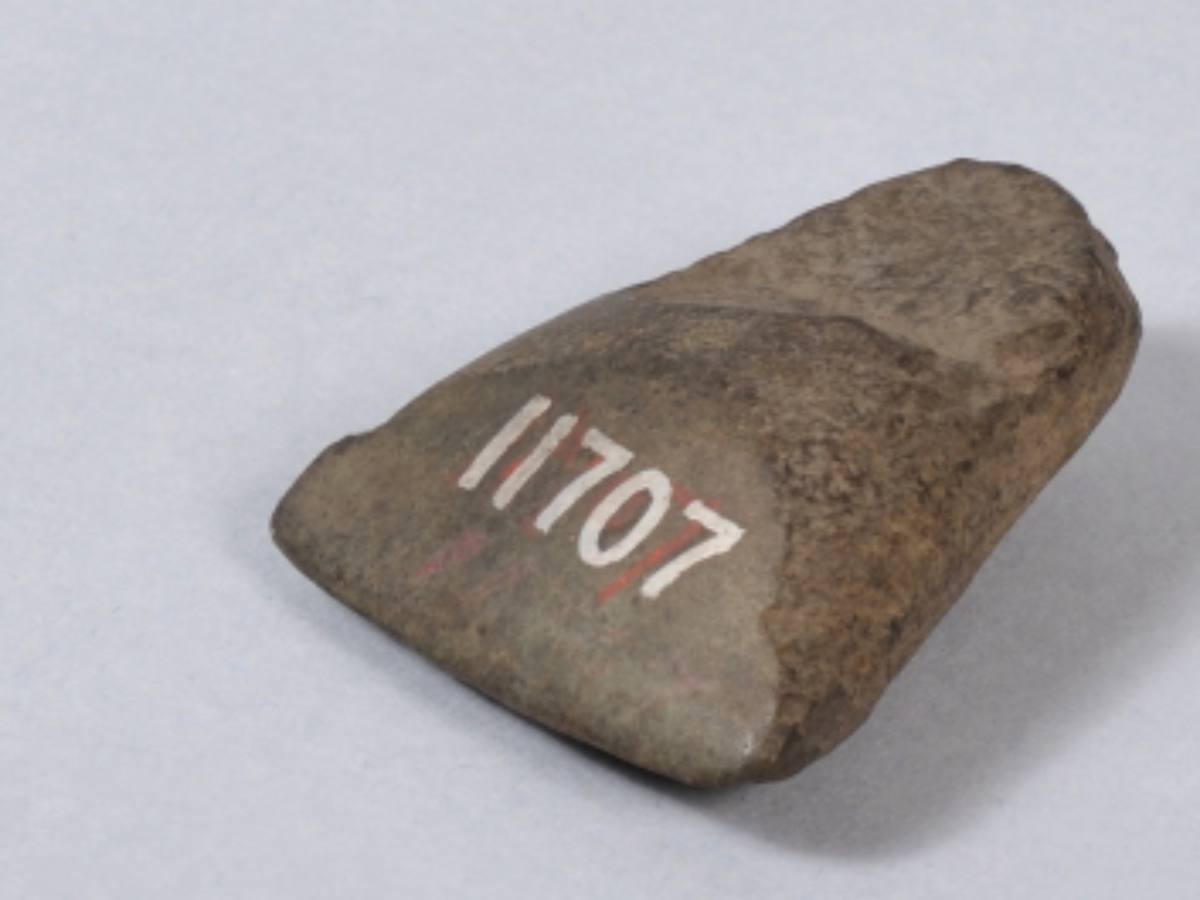State
Tribe Name
Art Type
short description
Naga is a tribe mainly living in Nagaland, Northeast India. It has rich culture, warrior tradition, and crafts. Among ancient tools used in ritual purposes by the Naga people is the stone celt, a prehistoric tool used by hunters as an indication of early technological development and adaptation to the environment. This stone celt is characterized as a small triangular tool made of stone, bearing one straight side and one cutting edge very sharp, hence serving all kinds of works, namely chopping, carving, or digging. The sharpness of the sharp edge gives an idea of how efficiently the Naga artisans worked with very primitive means to finish the tool. Such celts would have played an important role in regular activities such as clearing jungle, woodworking, or even actions where one could have infused a ceremonial aspect.
Thumbnail

Filter Postion
Left
Filter Background
Off
Theme
Filter Header Image

content
Image

description
Naga is a tribe mainly living in Nagaland, Northeast India. It has rich culture, warrior tradition, and crafts. Among ancient tools used in ritual purposes by the Naga people is the stone celt, a prehistoric tool used by hunters as an indication of early technological development and adaptation to the environment. This stone celt is characterized as a small triangular tool made of stone, bearing one straight side and one cutting edge very sharp, hence serving all kinds of works, namely chopping, carving, or digging. The sharpness of the sharp edge gives an idea of how efficiently the Naga artisans worked with very primitive means to finish the tool. Such celts would have played an important role in regular activities such as clearing jungle, woodworking, or even actions where one could have infused a ceremonial aspect.
It is an archaeological and anthropological artifact that carries intense significance. The presence of this artifact shatters the culture of the people in the early Neolithic stage of the region further back than the widespread use of metal tools. Such stone implements were earlier found throughout Nagaland; some now lie preserved in various state museums and collections. These tools carry with them an insight into the evolution of indigenous technology through the Naga tribes. They do indeed mirror the ingenuity of the community and their profound understanding of their natural environment way before the introduction of modern tools.
It is an archaeological and anthropological artifact that carries intense significance. The presence of this artifact shatters the culture of the people in the early Neolithic stage of the region further back than the widespread use of metal tools. Such stone implements were earlier found throughout Nagaland; some now lie preserved in various state museums and collections. These tools carry with them an insight into the evolution of indigenous technology through the Naga tribes. They do indeed mirror the ingenuity of the community and their profound understanding of their natural environment way before the introduction of modern tools.
Image Mode
landscape
promoted
On
Verified
Off
